It’s always been my philosophy to keep my kitchen equipment basic, with as few single-purpose tools and appliances as possible. But there are a few kitchen tools that go above and beyond. They’re multi-purpose items that are absolutely invaluable in my kitchen, and they get used almost every day. I want to share this short list of essential items with you because they’re a great place to start when you’re a beginner cook, and if you’re an experienced cook with tons of kitchen tools and gadgets, maybe this will help you simplify. ;)
If you want to read the full post about all of my kitchen equipment, check out Kitchen Basics – Tools and Equipment for a Well Equipped Kitchen.
This post contains affiliate links to products I use and love. As an Amazon Associate I earn from qualifying purchases.
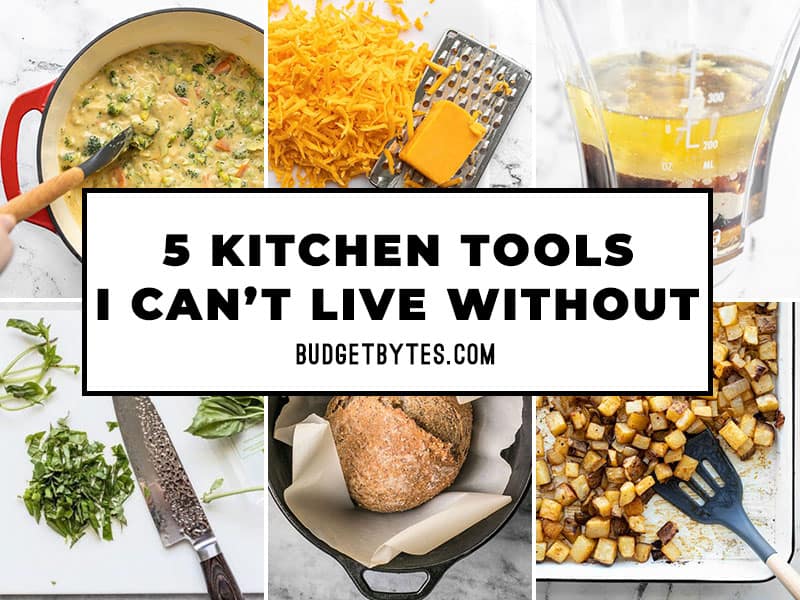
P.S. I saved the best for last, so don’t skip the end! And make sure to share your most used, can’t-live-without kitchen tools in the comments below. Are you ready? Let’s dive right in!
1. Dutch Oven
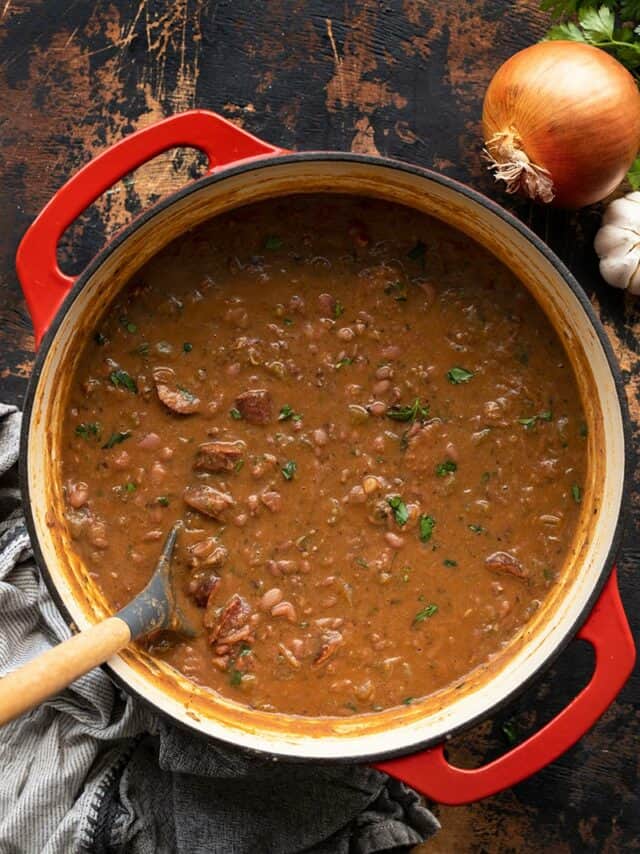
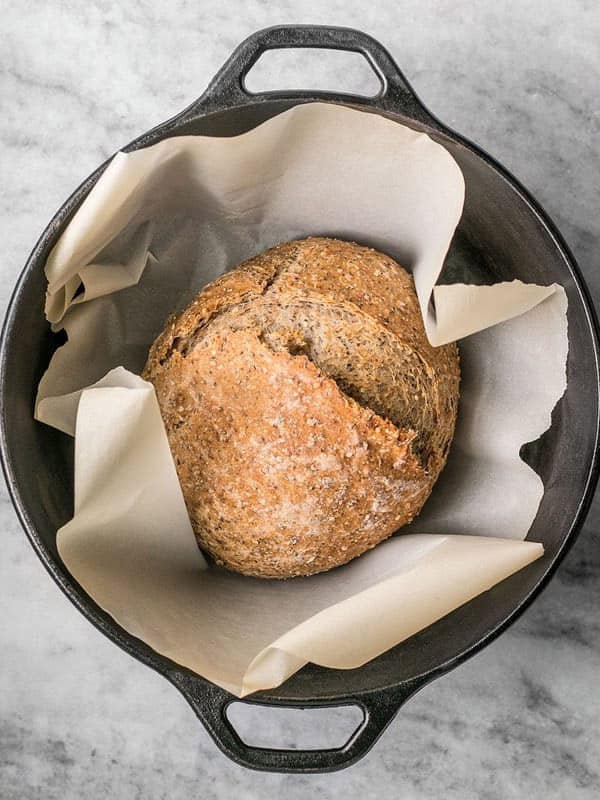
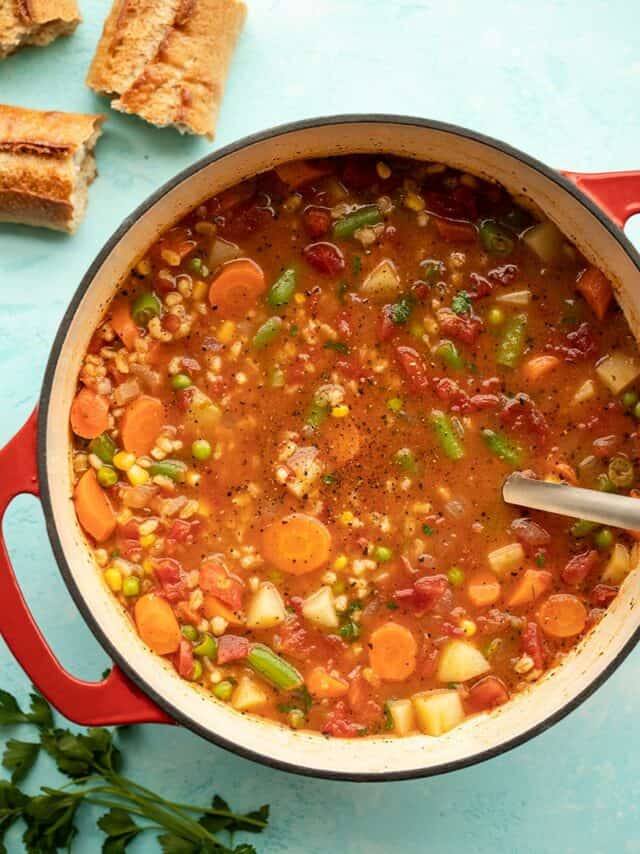
Why I Love Dutch Ovens
I was a little late to get on the Dutch Oven bus, but once on board I don’t know how I ever cooked without one! A Dutch Oven is a heavy duty pot with a tight fitting lid that can be used both on the stove top and in the oven. The thick walls, usually made with cast iron, make the vessel durable and provides super even heating for your food. Buy one Dutch Oven and you’ll have it for life!
How I Use Dutch Ovens
Because this piece of cookware can be used both on the stove top and in the oven, it is probably one of my most widely used pieces of cookware. On the stove top it’s great as an all-purpose soup pot, but the super even heating it provides also makes it ideal for one-pot style meals. No more cooked rice in the center and crunchy rice around the outside! The superbly even heating also makes this pot a great choice for deep frying, where keeping a consistent oil temperature is key.
Dutch ovens are also great to use in the oven because of their size and, again, the amazingly even heat. They’re great to use for roasting and braising meat, like pot roasts or roasted chickens. The thick walls of the Dutch oven also mimic the thick crock of a slow cooker, so many slow cooker recipes can be converted to the oven by using a Dutch oven (here is a conversion chart). Dutch ovens also make the perfect steam-filled environment for baking fresh no-knead bread. You’ve got to try it!
Buying Tips
Dutch ovens are usually constructed of cast iron, but many are also coated in enamel for easy cleanup and care. While some fancier Dutch ovens can cost hundreds of dollars, there are definitely budget-friendly models available. I have this Amazon Basics Enameled Dutch Oven, which cost about $50, and I love it so much that I bought a second one! Lodge also makes a really affordable non-enameled cast-iron Dutch oven that is very affordable, but the bare cast iron surface will require a little more care.
All three (!!) of my Dutch ovens are 6-quart size, which has worked out perfectly for the types of recipes I make—big batches of soup, beans, large roasts, and whole loafs of bread. Smaller Dutch ovens are available, but you can usually use the larger ovens for smaller recipes just as well.
2. Sheet Pans
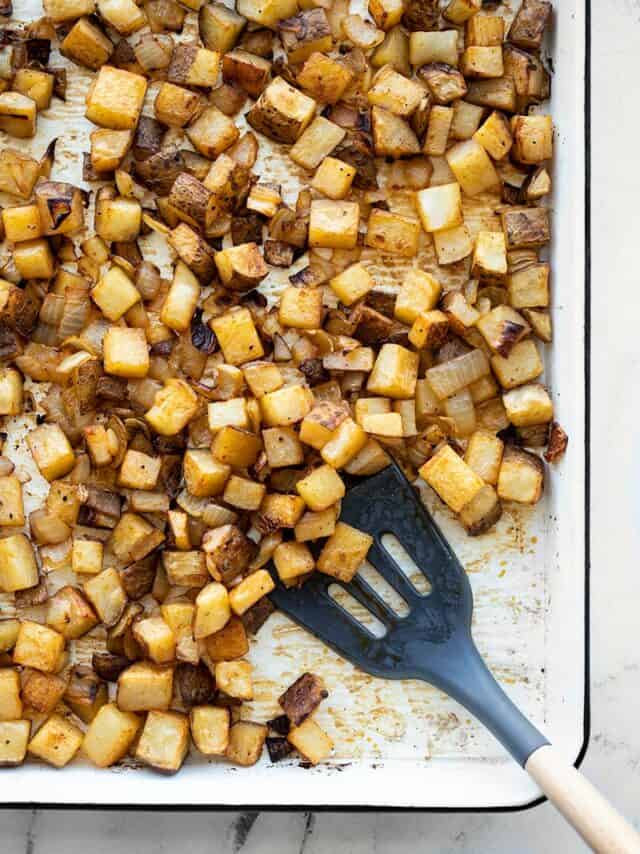
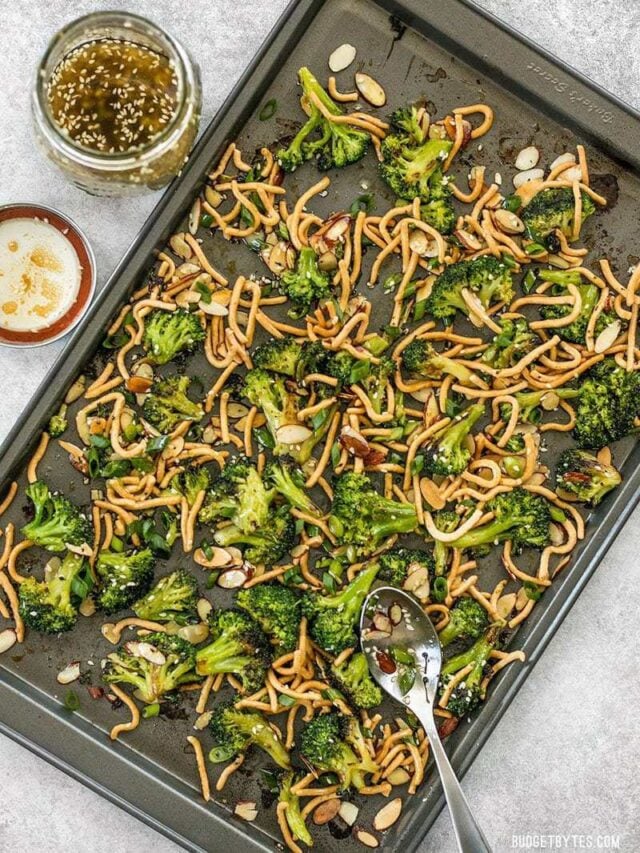
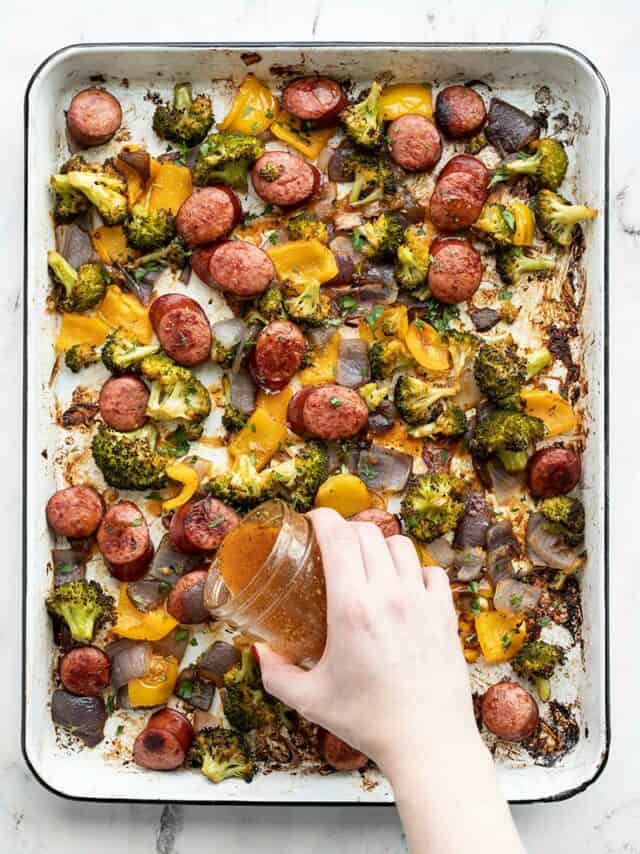
Why I Love Sheet Pans
Because roasting vegetables is my life! Haha, just kidding, sort of. Without sheet pans I wouldn’t be able to make at least half of the recipes that I cook. Baking things in the oven on a sheet pan is one of the easiest ways to cook, and even after you become a very experienced cook, you’ll return to your trusty sheet pan time and time again for its simplicity.
How I Use Sheet Pans
Sheet pans, or baking sheets, are great for baking cookies, roasting vegetables, making entire “sheet pan dinners“, baking pizzas, freezing ingredients without clumping, baking fries or chicken nuggets, cooking bacon, making granola, baking bread, and the list only goes on from there. I’d seriously be lost with a set of sheet pans!
Buying Tips
Sheet pans can be made with several types of material, and it’s important to know the difference between them when buying.
- Aluminum: aluminum baking sheets are lightweight and durable, but aluminum can react with some acidic ingredients, like tomatoes, so you’ll want to always be sure to use parchment paper or a silicone mat.
- Stainless steel: stainless steel baking sheets are prized for their durability, non-toxic, and non-reactive material, but they are slow to heat and cool, and can weigh a bit more. This surface is also not non-stick, so again, make sure to use parchment paper or a silicone mat.
- Non-stick: non-stick baking sheets are quite common for non-commercial use. The non-stick coating can scratch, so make sure to avoid using metal utensils with these baking sheets. The darker color of the non-stick coating also tends to brown the bottoms of cookies and other baked goods faster, so keep that in mind.
- Enamel coated: enamel coated baking sheets have a glossy enamel coating, which is naturally non-stick. They’re lightweight, easy to clean, and can be visually appealing, but the enamel coating can scratch and crack if you tend to be rough with your bakeware.
Sheet pans also come in a variety of sizes. Commercial baking sheets are often listed as full (26″x18″), half (18″x13″), or quarter (13″x9″). A commercial half sheet pan would be considered a large sheet pan for home cooking. Sheet pans sold for home cooks often just have the dimensions listed alone. I highly suggest buying a set of three sizes when just starting out, so you can have a sheet pan for every need.
3. Cheese Grater
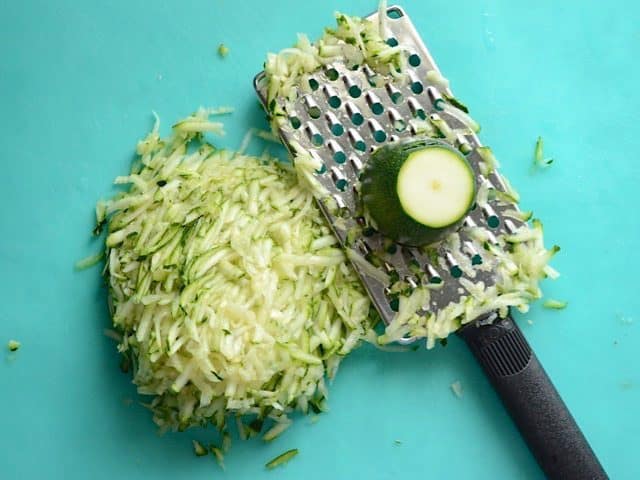
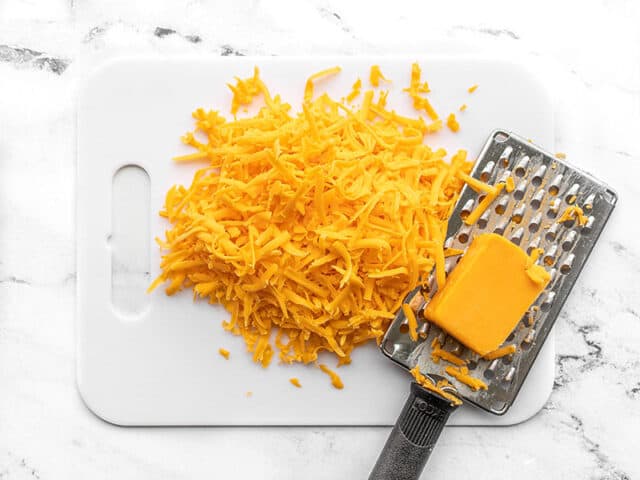
Why I Love Cheese Graters
Oh the humble cheese grater. So unassuming, but oh so very useful! I love this simple tool because it’s so versatile, yet so simple, so there are no complex mechanical parts to break. It saves me time with chopping and helps me sneak more vegetables into my meals.
How I Use Cheese Graters
I suppose I should stop calling it a “cheese” grater because I use it for so many more things than just cheese! Instead of finely chopping vegetables, just run the vegetables across the surface of your “cheese” grater to get an almost minced texture. I most often grate carrots, zucchini, potatoes, sweet potatoes, and beets. Fine-holed graters are great for garlic and ginger. I also use my graters to zest citrus fruits, and grate frozen butter when making biscuits and other flakey baked goods.
Buying Tips
Graters come in all sorts of shapes and sizes, but I suggest getting at least two sizes: large and small holes. You can either buy these as separate hand-held graters, or as one box grater than has multiple surfaces. I tend to like the single graters because I find them easier to clean, and if one is in the dishwasher, the other may still be clean and ready to use.
4. Small Blender
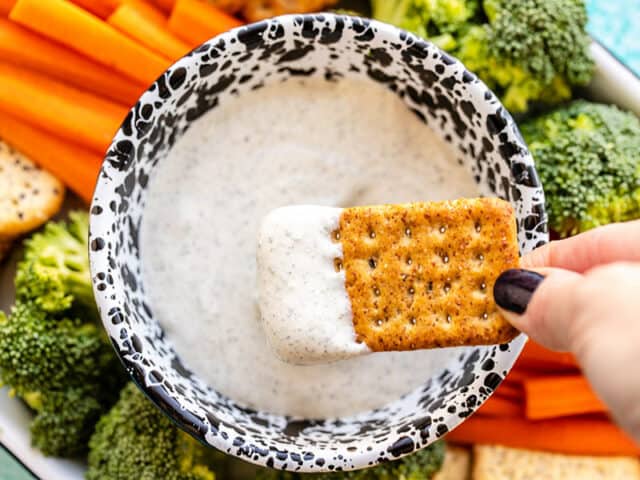
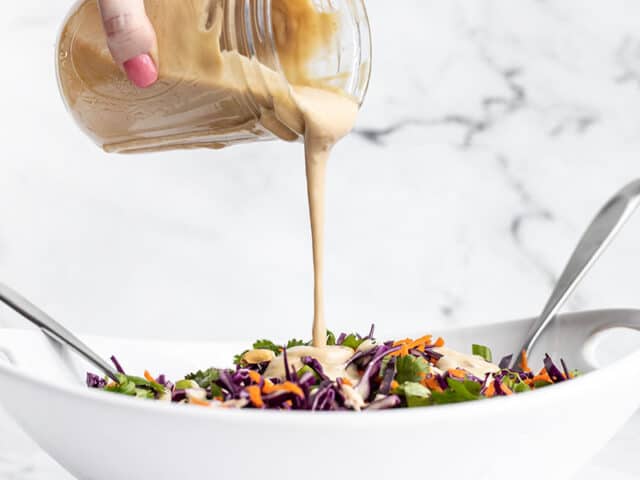
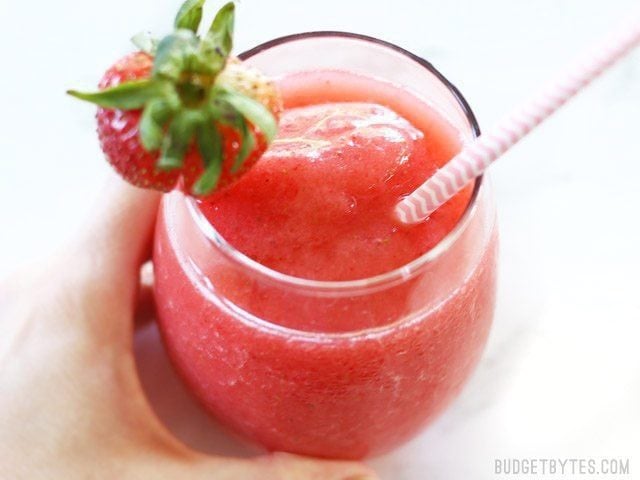
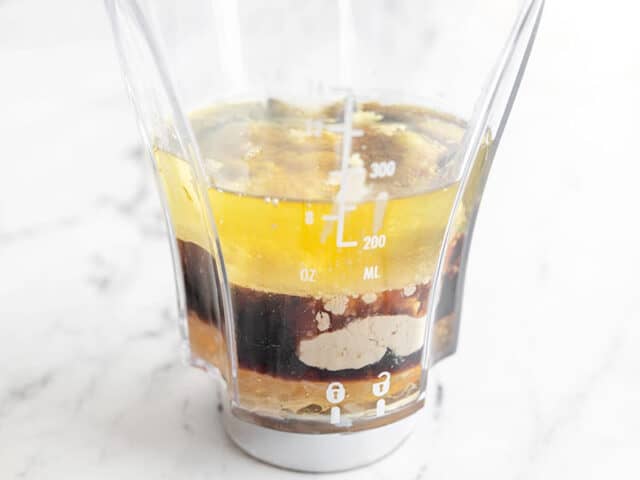
Why I Love Small Blenders
My small, single-serving blender is a surprise winner in my kitchen. I originally bought my little single-serving blender for making smoothies, but over the years have pulled it out of my cabinet for so much more. It’s small, so it doesn’t take up a lot of cabinet or countertop space, it’s easy to clean (mine can go in the dishwasher), and it’s inexpensive.
While my small blender was a cheap-o $15 dollar model that definitely didn’t last forever, I love it so much and find it so useful that each time it wore out, I repurchased it (two times over about 8 years).
Funny story: one day I convinced myself that I needed a “real” blender so I went and bought a fancy and expensive Ninja. I used that thing maybe two times and then kept going back for my little $15 wonder. :)
How I Use a Small Blender
My little mighty blender does just fine for smoothies, but don’t expect Blendtec or Vitamix level results. In addition to smoothies, I use my little blender for whipping up homemade salad dressings, dips (although it’s not great for super thick dips like hummus), sauces, and puréeing other ingredients, like beans. It’s just perfect for small jobs where you don’t want to deal with or clean a giant 9 cup blender with scary sharp blades.
Buying Tips
I can only vouch for the Hamilton Beach model that I have owned, which also doesn’t seem to be available on Amazon for its normal $15-$20 price. You can get this model at Target, Walmart, or probably any other major home goods store.
As an alternative to a small single-serving blender, an immersion blender will probably accomplish many of the same small tasks and can boast a few more uses (like blending soups right in the pot), but they do tend to be about double the price.
5. Chef’s Knife
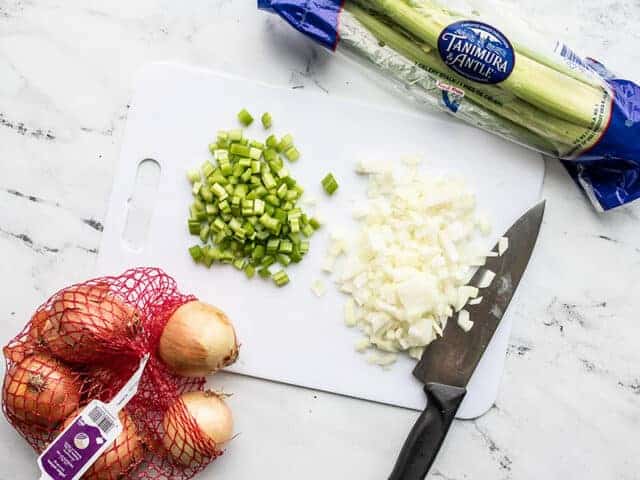
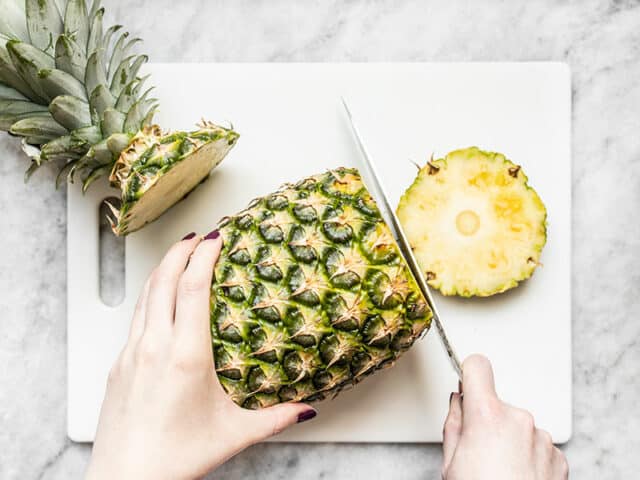
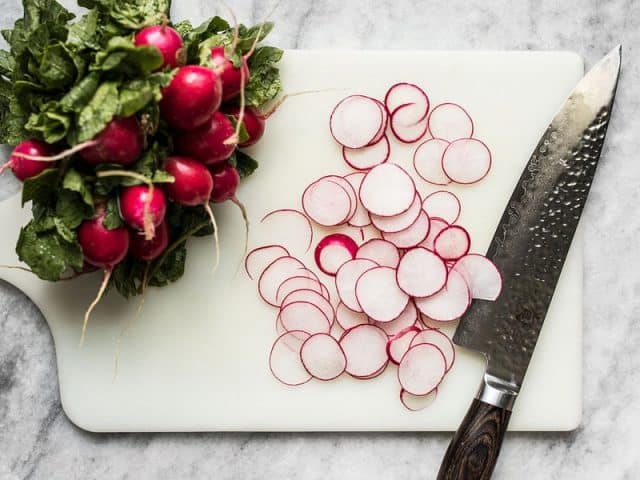
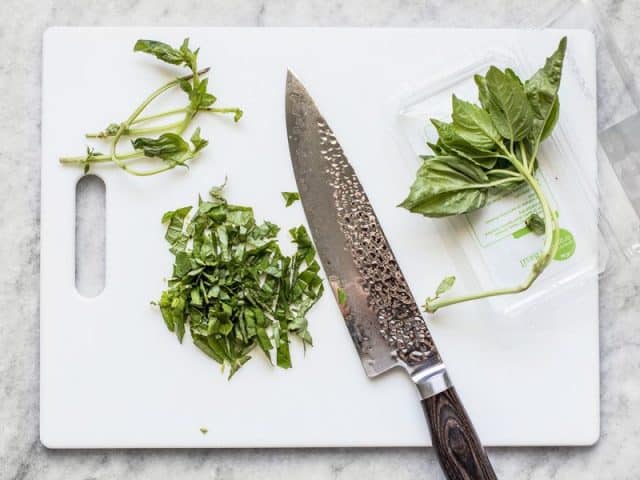
Why I Love My Chef’s Knife
I saved the best for last! My chef’s knife is like an extension of my arm. It’s a general purpose kitchen utility knife that I use almost exclusively when cooking. In fact, I probably will never buy a full set of kitchen knives because this is practically the only knife I use (aside from a bread knife and the occasional paring knife). Chef’s knife are big and sturdy enough for large jobs, but small enough to be nimble and allow for a working at a quick pace. I absolutely, without a doubt, would not be able to function in my kitchen without it.
How I Use a Chef’s Knife
The long, broad, slightly tapered blade of a chef’s knife is great for slicing, chopping, mincing, julienning, carving, and more. If you’re not sure what type of knife to use for your task, a chef’s knife is a safe bet. Avoid chef’s knives for small jobs, like peeling or scoring, boning, or fileting.
Always make sure your chef’s knife is clean and sharp to avoid slips and injuries. Always wash by hand and avoid the dishwasher, where it can get dinged up and dulled. Keep your chef’s knife in some sort of knife holder or magnetic strip, again to avoid rubbing on other items and unintentionally damaging the blade.
Buying Tips
Much like Dutch ovens, chef’s knives can range in price from very cheap to very expensive. I’ve used the cheapest of the cheap chef’s knives up to some very pricey “fancy” knives, and I will say that they all get the job done. My favorite chef’s knife that is the perfect balance between budget and quality is the Victorinox Fibrox 8-inch Chef’s Knife, and this is what I am currently using daily in my kitchen. I also own a Shun 8-inch Chef’s Knife that I won in a raffle, and while it is very pretty and has superb craftsmanship, I don’t find that it performs any better than my Victorinox. In fact, I prefer the weight balance of my Victorinox.
Chef’s knives come in several different lengths, materials, and weights. It’s important to choose a length that is appropriate for your hand size. With my petite hands, an 8-inch knife is perfect and allows for great control and agility. If you have larger hands, you may prefer a 10 or even 12-inch chef’s knife. If you’re serious about your knives, I suggest visiting a cutlery store where you can pick up and feel the knives in your hand and choose one that feels comfortable and natural to you.
So that’s it! Those are the five most used items in my kitchen! What are yours? Share your favorite kitchen tools and gadgets, plus how you use them, in the comments below!


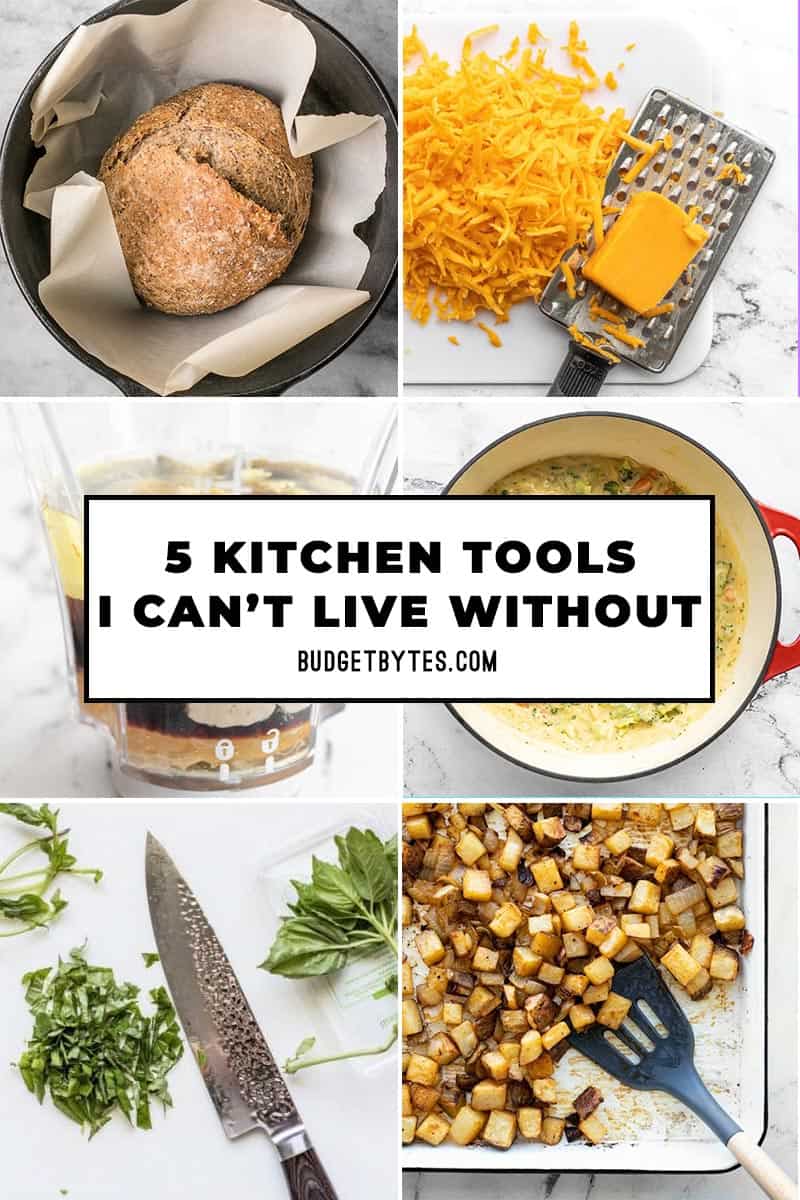
Hah! My best friend teases me for using a chef’s knife for (almost) everything but now I feel validated.
My other top-used items are a set of four sheet pans I bought at Goodwill for $2 each, my inherited food processor that’s probably older than I am (used for soups and that pineapple lassi recipe), just the biggest pot I could find because I live alone and often make and freeze 4+ portions at a time, an immersion blender (I HATE having to haul out a stand mixer), and a set of lightweight but still metal mixing bowls (can’t go in the microwave to melt butter but they CAN be used with said immersion blender).
The next time your friend makes fun of you for using a chef’s knife for almost everything, tell them that chef’s knives are literally made to be used for almost everything. ;)
I would have to keep my food processor, instead of the mini blender. When my first full size food processor, a 30 year old I picked up at Goodwill & fell in love with, finally crossed the rainbow bridge, I decided to also get rid of my mini food processor & invested in a FP that has an insert to double as a mini & a full size. I use it for so much: blender, chopper, biscuit maker, grater, slicer…I really think it’s the best invention of the 20th century. :-) I’d be hard pressed to do without my KitchenAid stand mixer, too. Again, I use it for so many different things that it’s been a fantastic purchase.
I agree with all of your five. I use a mini food processor though. I would add a cast iron skillet. I use that and my Dutch oven the most. Oh, Nd my wooden flat edge spoon.
One of my most-used kitchen tools is a “spoontula” that I flippantly picked up at Walmart when I was buying everything for my first college apartment. It’s rubber spatula with one curved corner and one rounded corner, and it also has a dip in the middle that acts like a shallow spoon. I use it for stirring, sautéing, mixing, and pretty much anything else done on the stove or in a bowl!